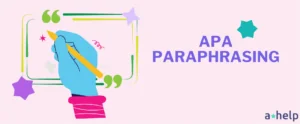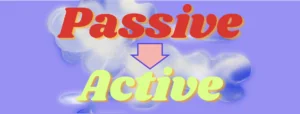When writing a research paper or an academic work, students often face the challenge of incorporating the ideas of others into their writing. The task requires a delicate balance between quoting and paraphrasing, each serving a unique purpose in the fabric of a well-crafted paper. Understanding the nuances of these two techniques is crucial for any student looking to produce a compelling and credible piece of work.

✅ AI Essay Writer ✅ AI Detector ✅ Plagchecker ✅ Paraphraser
✅ Summarizer ✅ Citation Generator
Do You Need Quotation Marks When Paraphrasing?
❌Unlike direct quotes, paraphrased content does not require quotation marks because it is not a verbatim copy of the original source. Instead, it involves rephrasing or rewording the original idea in a way that is both original and reflective of the writer’s understanding.
The absence of quotation marks in paraphrased content shows that the words are the writer’s own, rather than a direct copy from another (original) author. However, this does not mean that the idea is entirely yours as a writer.
✅The underlying concept or information still originates from the original source, and therefore, you have to provide proper attribution through citation.
This gives credit to the initial author for their contribution and allows readers to trace the idea back to its source for further exploration or verification.
Citing paraphrased content in the List of References also adds credibility to your work as it demonstrates a thorough engagement with relevant literature and respect for the intellectual property of others. It helps to distinguish between your original thoughts and the ideas that have been influenced or informed by other works. Moreover, proper citation of paraphrased content is essential for avoiding plagiarism, which is a serious ethical and academic offense. Believe us, you don’t want to see that stated on your record.
Signal Phrases and How They Can Be Used to Recognize Quotes
Signal phrases are introductory phrases used to integrate quotes or paraphrased content into your paper. They help to attribute the information to the original author and can indicate whether the following text is a direct quote or a paraphrase. For example, phrases like “According to [author]” or “[Author] states” can precede either a quote or a paraphrase, providing clarity to the reader about the source of the information.
Examples of Signal Pharse Use Cases
Here are some examples illustrating the use of signal phrases:
| Quotation with the author in signal phrase | According to Smith, “The study revealed significant findings” (45). |
| Quotation without a signal phrase | “The study revealed significant findings” (Smith 45) |
| Paraphrase with the author in the signal phrase | Smith suggests that the study uncovered important results. |
| Paraphrase without a signal phrase | The study uncovered important results (Smith) |
Paraphrasing & Quoting
As we have established, paraphrasing and quoting are two fundamental techniques used in academic writing to incorporate the ideas and research of others into one’s own work. While both methods serve to strengthen arguments and provide evidence, they differ significantly in their application and purpose.
Paraphrasing involves taking an idea or concept from a source and expressing it in one’s own words. It requires a deep understanding of the source material and the ability to convey the same meaning in a new form. Paraphrasing is often used to summarize or clarify complex ideas, making them more accessible to the reader. As we mentioned in the beginning, since the paraphrased content is not a direct copy of the original, it does not require quotation marks. However, it still calls for proper citation to acknowledge the source of the idea.
On the other hand, quoting involves directly using someone else’s words, exactly as they appear in the original source, enclosed in quotation marks. Quotes are used when the exact wording is important for the argument or when the author’s original phrasing is particularly eloquent or powerful. Quoting allows the writer to provide direct evidence or support from an authoritative source. Unlike paraphrasing, quoting requires the inclusion of page numbers in the citation (when applicable) to allow the reader to locate the exact passage in the original work.
The choice between paraphrasing and quoting depends on the writer’s purpose and the nature of the information being conveyed. Paraphrasing is suitable for condensing information or presenting it in a way that is more aligned with the writer’s style. Quoting is more appropriate for presenting specific evidence, supporting claims, or highlighting a particularly noteworthy expression by the original author.
| Paraphrasing | Aspect | Quoting |
|---|---|---|
| Own words, different from the original | Words Used👄 | Exact words as in the original |
| Yes, but without page numbers | Citation Required✍️ | Yes, with page numbers (when applicable) |
| Not required | Quotation Marks❝❞ | Required |
| To rephrase or summarize the original idea | Purpose🧐 | To provide evidence or support from the source |
| Less similar, reworded | Similarity to Source🔍 | Identical, word-for-word |
Conclusion
Both paraphrasing and quoting are essential for any type of academic writing, be it a research paper or a literary analysis. While paraphrasing allows you to express ideas in your own words, quoting provides direct evidence from the source. Keep in mind that paraphrased content does not require quotation marks but still needs proper citation. Understanding the differences between these two techniques and using signal phrases effectively, can help you improve the credibility and impact of your work, as well as make sure that the original authors are duly credited for their contributions. Consuder asking our new tool “reword this for me” if you are struggling with paraphrasing.
FAQ
Follow us on Reddit for more insights and updates.





Comments (0)
Welcome to A*Help comments!
We’re all about debate and discussion at A*Help.
We value the diverse opinions of users, so you may find points of view that you don’t agree with. And that’s cool. However, there are certain things we’re not OK with: attempts to manipulate our data in any way, for example, or the posting of discriminative, offensive, hateful, or disparaging material.